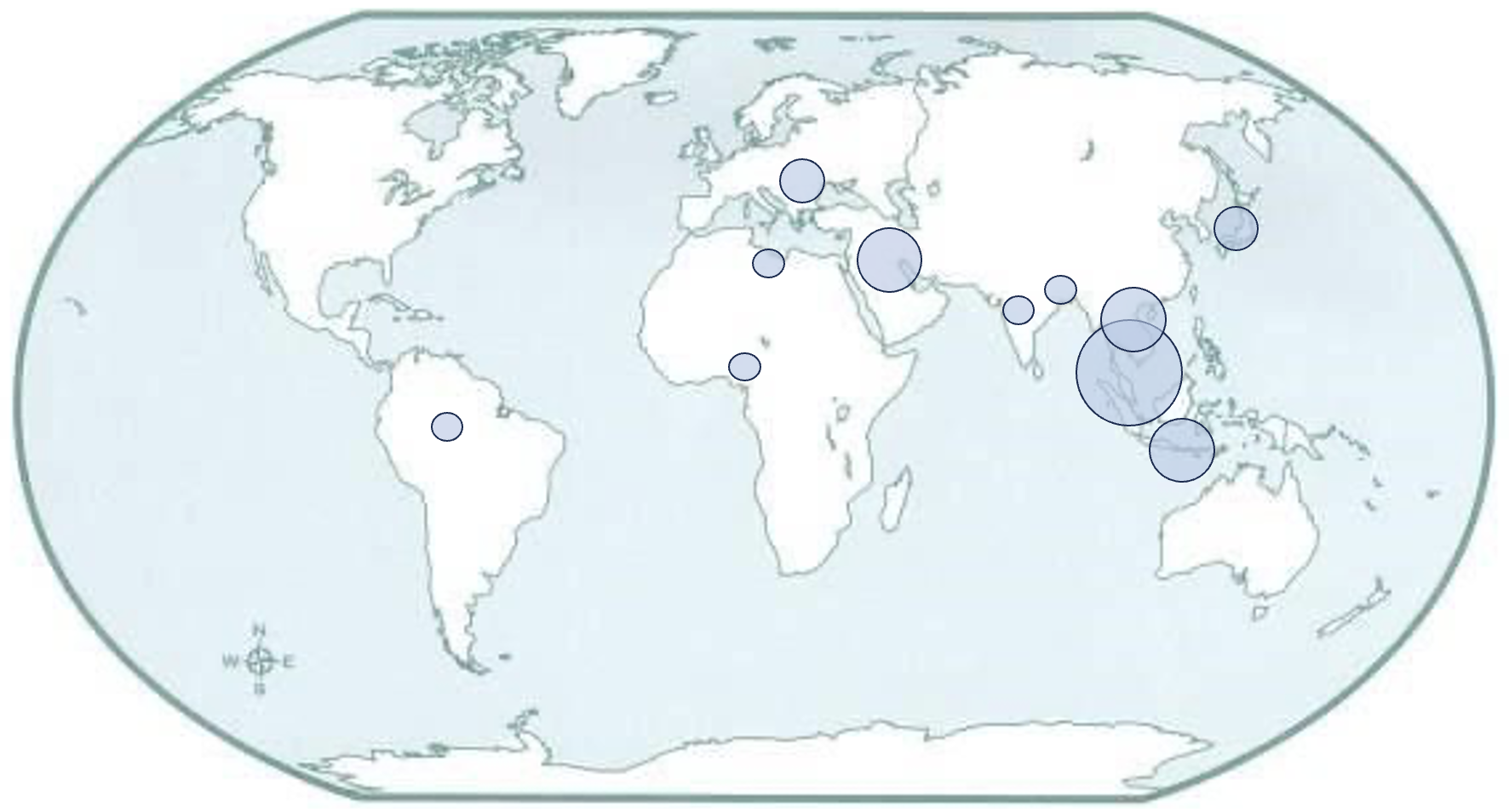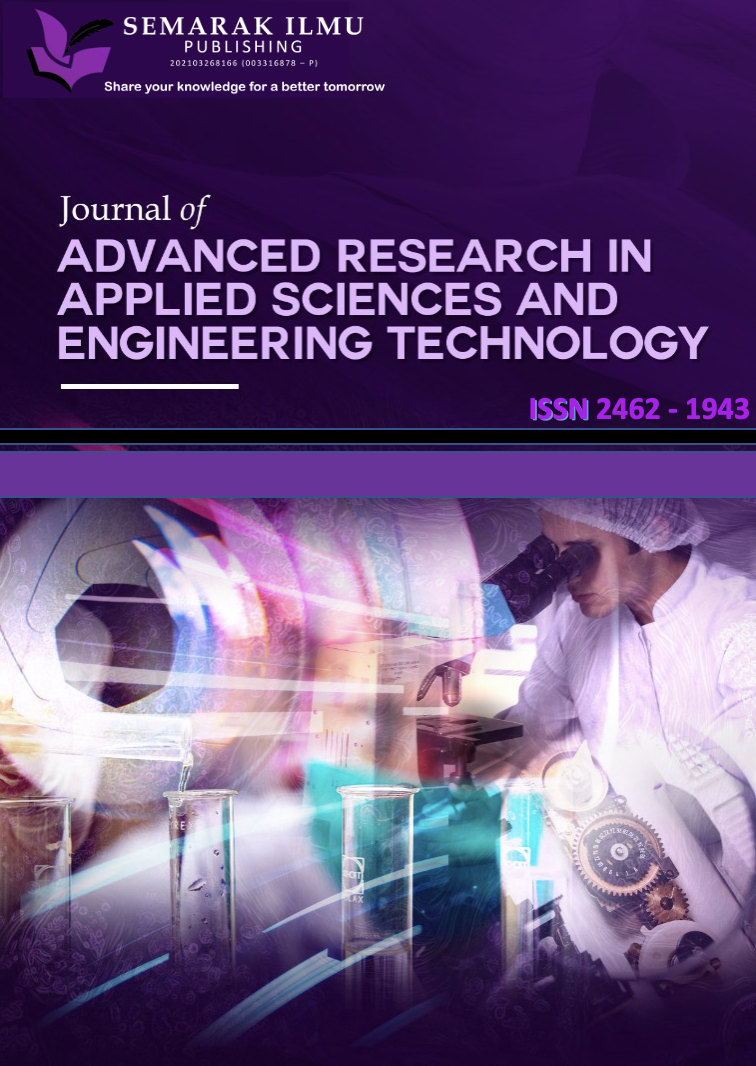Isolation and Characterization of Cellulose Nanocrystals from Solid Seaweed Wastes
DOI:
https://doi.org/10.37934/armne.28.1.4759Keywords:
Nanocellulose, lignocellulosic biomass, acid hydrolysis, carrageenan extraction, reinforcing fillerAbstract
Cellulose nanocrystals (CNCs) are an intriguing class of bio-based nanoscale materials, desirable for a wide range of applications due to their remarkable physicochemical properties which include biocompatibility, biodegradability, renewability, low density, tuneable surface chemistry, optical transparency and improved mechanical properties. In this study, the solid seaweed wastes (SSW) obtained from carrageenan production were utilized to isolate CNCs using a modified one-pot oxidative-hydrolysis treatment. The physicochemical properties of the CNCs were further characterized using various methods including Fourier Transform Infrared Spectroscopy (FTIR), Energy Dispersive X-ray (EDX) analysis, X-ray Diffraction (XRD), Scanning Electron Microscopy (SEM), Transmission Electron Microscope (TEM) and Atomic Force Microscopy (AFM). The spectra analysis from FTIR and EDX reveals the removal of non-cellulosic components from the SSW after hydrolysis, along with high percentages of carbon and oxygen, implying the cellulose-rich content of the CNCs. The SEM, TEM and AFM analysis depicts the needle-like morphologies of CNCs with sizes ranging from 6 to 35 nm. The XRD analysis also reveals the high crystallinity of CNCs, which benefits its mechanical properties. This study demonstrates the potential for exploiting waste products from carrageenan extraction of red seaweed to obtain valuable CNCs which hold great potential for applications in areas such as flexible electronics and food packaging.
Downloads

























